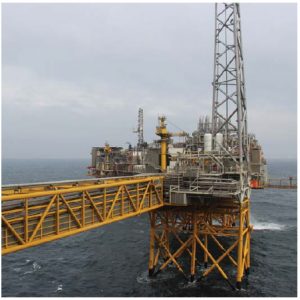
In a period when oil prices were high, Norway has been able to transform oil in the ground into financial wealth. Today, the Government Pension Fund Global is one of the world’s largest sovereign wealth funds. By investing abroad, leaving capital in the fund untouched and limiting annual spending in the national budget to four per cent of the fund’s capital, Norway has managed its oil wealth to the benefit of its people today while at the same time providing future generations with a share of the wealth. One day, the oil will run out, but the returns on the fund will continue to benefit the Norwegian population for generations to come.
The investment strategy and management framework for the fund do not represent a universal ideal, but rather they reflect the political and ideological context in which the fund operates. Strong support from the Norwegian population and broad political support for this budgetary rule are imperative to staying firmly on course. The largest part of Norway’s revenue stems from the mainland economy, not from oil and gas, but it’s still important to make sure the large oil revenues do not result in complacency. The Norwegian government, therefore, makes the public sector more efficient, reduces red tape and bureaucracy, cuts the overall tax level and stimulates innovation to ensure a smooth transition to a new and less oil-dependent growth model.
In the beginning
Oil was discovered on the Norwegian side of the continental shelf in 1969 and production began in 1971. It took about 10 years before the government’s oil revenues became substantial.
Today, Norway is considered the world’s third largest exporter of gas and a significant exporter of oil. Norway’s population is more than five million. Our maritime area is six times our land area. Nearly half of known oil and gas reserves on the Norwegian continental shelf have yet to be extracted and large new discoveries have been made over the past few years.
Petroleum accounts for roughly 15 per cent of the Norwegian economy, approximately 20 per cent of total state revenues and about 40 per cent of Norwegian exports. The high share of GDP makes petroleum resources important to the Norwegian economy; moreover, their revenues give us fiscal leeway that sets us apart from most other countries.
The idea of a petroleum fund was proposed as early as 1983. Over the years, the idea matured and in 1990, the parliament passed an act establishing the Government Petroleum Fund. However, the first transfer of approximately $307 million was not made until six years later. Since then, the fund has grown rapidly and was, in June 2016, valued at more than $1,150 billion. The value has increased steeply for many years, but it flattened recently due to low oil prices. It currently stands at almost three times the mainland GDP.
Sustainable spending
The aim of the fund is twofold: first, to ensure that petroleum wealth benefits current and future generations and second, to shelter the domestic economy from overheating due to oil-financed demand.
Consequently, all state petroleum revenues are transferred to the fund and invested abroad. This helps shelter the domestic economy and the exchange rate from the volatility of petroleum revenues.
The budget rule guides how much the government should use from the fund to finance government spending. It specifies that transfers from the fund to the national budget shall, over time, follow the expected real return on the fund, which is estimated at four per cent. But it also allows for a flexible response to prevailing economic conditions. In periods of high economic growth, spending is less than the long-term target. In periods of economic downturn, spending exceeds the long-term target. It shelters fiscal policy from oil price volatility and uncertainty.
Investment strategy
Parliament has given the overall responsibility for management of the fund to the ministry of finance. The operational management has been delegated to the central bank, which makes investment decisions on a purely financial basis and independently from the ministry.
The overarching objective for the investments is to achieve the maximum possible return, given a moderate level of risk. This enables more social programs to be financed over time by the return on the fund.
The fund is invested globally with the following strategic asset allocation: 60 per cent equities, up to five per cent in real estate. The residual is in fixed income. At year-end, 2015 investments are spread across 75 countries and 47 currencies, and more than 9,000 companies, including 253 from Canada.
The strategy implies that the fund is a financial investor with relatively small ownership stakes in a large number of companies worldwide. The fund is not allowed to own more than 10 per cent of any single company in the equity portfolio. The ministry reports to parliament on all important matters related to the fund. Transparency is important to Norwegians.
Ethical guidelines
Norwegians want assurance that the fund capital is invested in accordance with responsible investment practices. The public’s strong feelings on this issue led to the establishment of ethical guidelines for the fund in 2004.
The ethics council was established the same year, making recommendations on how to apply ethical guidelines in specific cases. The ownership department of the central bank focuses on a number of strategic areas, three of which are related to good corporate governance and three of which are related to environmental and social issues, including children’s rights, climate change and water management.
The government believes, over the long run, that sound financial returns depend on sustainable development in economic, environmental and social terms. Several instruments promote the fund’s role as a responsible financial investor. Exclusion of companies is one of these instruments.
A total of 91 companies are excluded from the fund under the product-based criteria — 18 of them have been excluded on the basis of production of weapons that violate fundamental humanitarian principles in their normal use, while 21 are excluded for producing tobacco. More recently, according to new guidelines introduced early this year, the fund withdrew from 52 companies mining coal or producing coal-based energy. Other relevant companies that may come under the coal criterion will be analyzed over the course of this year. An additional 29 companies are excluded under conduct-based criteria, 17 of them because they were deemed to cause severe environmental damage.
Challenges ahead
Norway has healthy government finances, relatively low unemployment and has seen years of high economic growth. However, our economy also faces challenges ahead.
Over the next decades, government spending linked to an aging population will increase rapidly. Total petroleum production already peaked in 2004 and will play a less important role in our economy in the future.
The rapid rise in public pension expenditure and a concurrent decline in oil and gas revenues represent a challenge to public finances. This underlines the need to save a large part of current oil and gas revenues while prices are high. The fund will help Norway finance the expected increased spending on an aging population. In addition, Norway also has an ambitious reform agenda for the private and public sectors, including reforms to infrastructure, tax reform for growth and requirements on efficiency improvements in the public sector. The Norwegian government is working to ensure a smooth transition to a new and less oil-dependent growth model.
Anne Kari Hansen Ovind is Norway’s ambassador to Canada.





